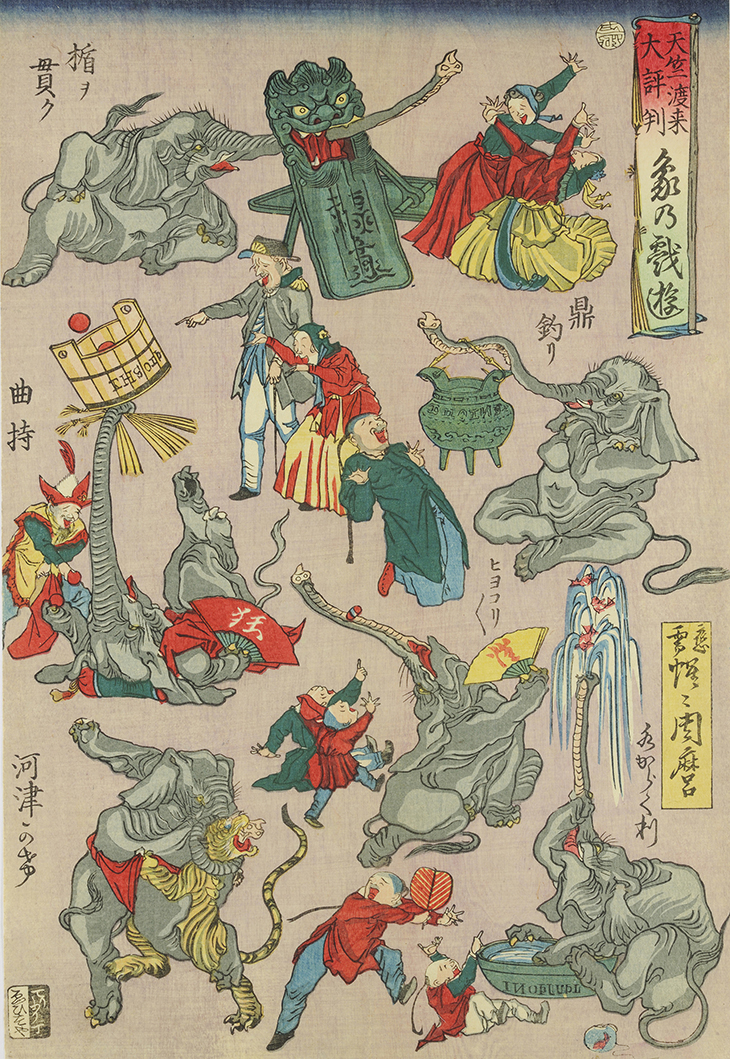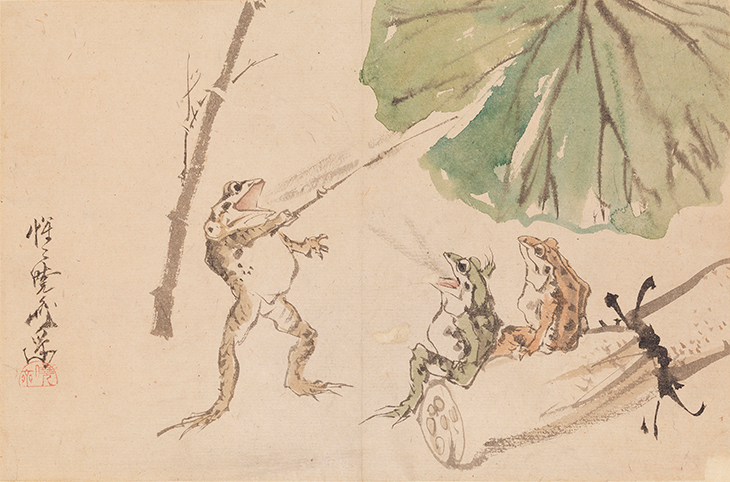The Japanese virtuoso Kawanabe Kyosai was renowned for his sekiga – comic paintings, improvised at drunken shogakai (‘calligraphy and painting parties’). Life in 19th-century Japan offered rich material for a satirist; there are numerous written records of Kyosai’s encounters with some of the European and American visitors to Japan after the country opened its ports in 1854, and his prints and paintings frequently depict the introduction of Western culture, as well as domestic political events. Kyosai also produced more polished studio works, reflecting his academic training at the celebrated Kano school; as well as a wide selection of his sekiga and his erotic shunga, a highlight of this exhibition of 80 works by Kyosai at the Royal Academy in London (19 March–19 June) is a pair of 3m folding screens, Night procession of one hundred demons (1871–89). Find out more from the RA’s website.
Preview below | View Apollo’s Art Diary here

Famous from India: Elephants at Play (1863), Kawanabe Kyosai. Israel Goldman Collection, London. Photo: Art Research Center, Ritsumeikan University

Skeleton Shamisen Player in Top Hat with Dancing Monster (1871–80), Kawanabe Kyosai. Israel Goldman Collection, London. Photo: Art Research Center, Ritsumeikan University

Frog School (early 1870s), Kawanabe Kyosai. Israel Goldman Collection, London. Photo: Ken Adlard

Ghost (c. 1868–70), Kawanabe Kyosai. Israel Goldman Collection, London. Photo: Art Research Center, Ritsumeikan University

Hell Courtesan (Jigoku–dayū), Dancing Ikkyū and Skeletons (1871–89), Kawanabe Kyosai. Israel Goldman Collection, London. Photo: Ken Adlard














![Masterpiece [Re]discovery 2022. Photo: Ben Fisher Photography, courtesy of Masterpiece London](http://zephr.apollo-magazine.com/wp-content/uploads/2022/07/MPL2022_4263.jpg)
Suzanne Valadon’s shifting gaze